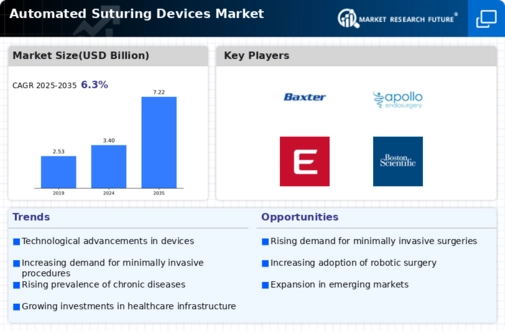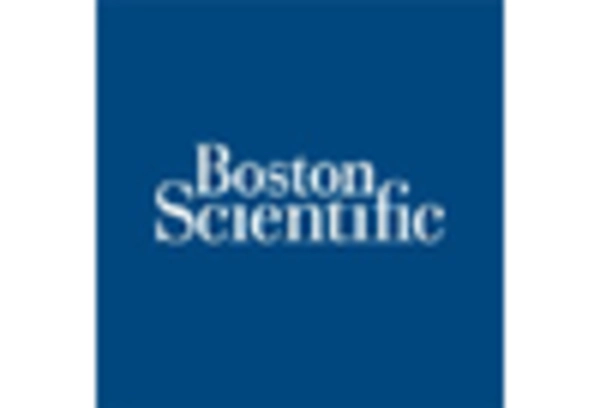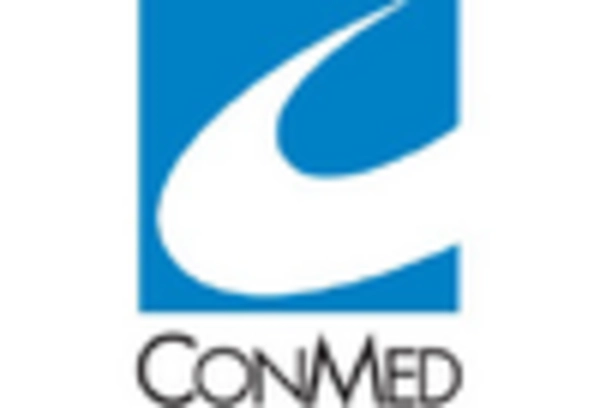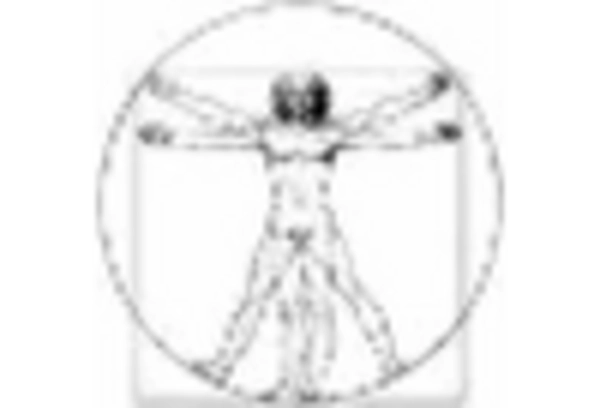Market Trends
Key Emerging Trends in the Automated Suturing Devices Market
The market for automated suturing devices is witnessing significant trends driven by advancements in surgical technology, a growing demand for minimally invasive procedures, and the increasing emphasis on improving surgical outcomes. Here's a breakdown of key market pointers: the rise in the popularity of minimally invasive surgeries is the main reason for the market increase. For surgeons and patients, the demand for treatments that give minimal or no incisions, lessen scaring and shorter healing time. Automated suturing devices are a vital part of enhancing suturing in the minimally invasive settings. Autonomous suturing equipment implementation to robotic surgical systems is one of the trendy topics nowadays. Minimally invasive surgeries performed through robotically assisted surgeries provide increased precision and control, and utilization of the automated suturing devices further enhances these systems. This tendency is clearly reflected in the field of arterial re-entry in complex surgical techniques including a wide range of urology, gynecology, and general operations. A greater attention is paid to the improvement of the surgical efficiency by surgeons, and the automated suturing devices fit into this concept. Such equipment facilitates the suturing process is therefore, accelerated, and closures, are standardized. Highly effective surgeons not only benefit from shorter procedure times but also have benefited to better patient outcomes. The automated suturing devices market is being affected by the growth of ambulatory surgical centers (ASCs). ASCs, mainly focused on cost-effective and efficient procedures, prefer the technologies that ensure fast-running and smooth surgeries. If we talk about this scenario, the automated suturing devices possessing the ability of procedural efficiency are getting popular. There is more to technological advancements than automation; there is continuing development in the materials and design of suturing devices. It is done using better materials that include better level of biocompatibility and strength in sutures and also new design which allows the surgeon to handle the same easily. The advances described above enhance the overall efficiency of automated suturing devices below some more significant enhancements. Global penetration of surgical robotics is driving the automated suturing devices market. In countries all over the world, robotic-assisted surgeries are becoming more frequent, and chronological growth in demand for available second order automated suturing technologies can be observed. The company is expanding its operations worldwide thus leading to partnerships between the providers of robotic surgery platform and suturing devices manufacturers. Price factors are also among the determinants of the automated via device technology. In the system of value-based models, healthcare systems are looking for such technologies that would give a good compromise between quality of results and cost efficiency. Hospitals and manufacturers to this by perfecting the pricing model and demonstrating the value of long term benefits of automated suturing solutions. As with any medical device market, regulatory compliance and standardization are critical trends. Adherence to regulatory standards ensures the safety and efficacy of automated suturing devices. Standardization efforts focus on establishing best practices, protocols, and guidelines for the development and use of these devices in diverse surgical settings.
















Leave a Comment